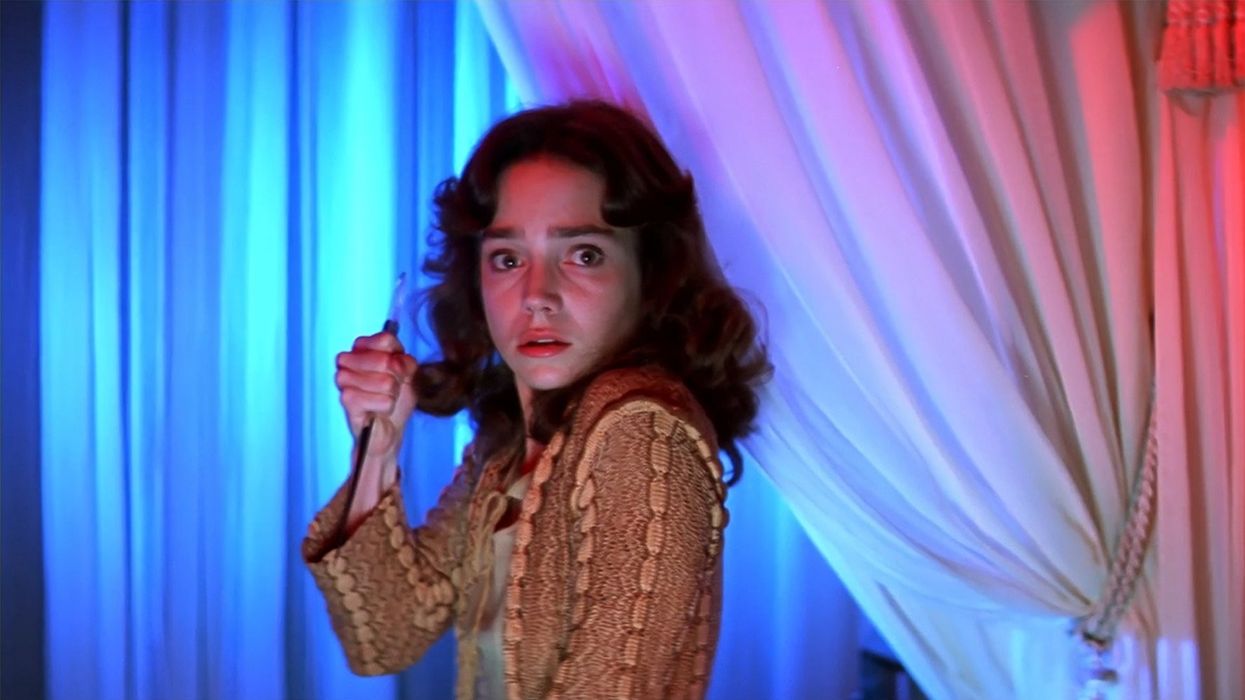5 Lighting Concepts Every DP Should Know
Lighting can make or break a film. Here are some concepts that you should know before you start filming.

It’s the job of a cinematographer to know how to sculpt images and influence the visual ambiance of a film. The lighting of the film could be subtle, soft, firm, or brash because the expressions of lighting are limitless.
To master the manipulation of lighting, it’s key to know these five lighting concepts. Every DP must know these; by understanding these concepts, you can deliberately break the rules to enhance the emotion or perfect the visual tone for each film you work on.
In Depth Cine breaks each one down in the video below.
The Three-Point Lighting Technique
The direction of light is the most important job of a DP. Although three-point lighting is considered “old school,” it adds contrast and depth to a scene.
First is key light. Key light is the main source of light that is traditionally set up at a 45-degree angle from the character’s face. The fill light, which is usually softer and less intense, is set up at an opposite 45-degree angle from key light to soften shadows, create contrast, and fill in the character’s face. The backlight is placed behind the character to create an outline of the character or provide some detail to the subject’s hair. (This is why it is sometimes called a “hair light.”) This increases the separation between the character in the foreground and the background.
This type of lighting could be created with natural lighting or practical lighting from lamps, light fixtures, or pretty much anything that produces light.

High Key vs. Low Key
To understand high-key and low-key lighting, you must understand contrast ratios first.
Contrast ratios are the different luminance between the light part of an image (lit by key light) and the dark part of the image. Different areas of exposure create contrast and depth in the scene, and having a brightly lit subject against a dark background gives images more separation.
High-key lighting has low contrast, and the exposure is more even across the shot. Comedic films, beauty shots, and light-hearted films are characterized by high-key lighting.
Low-key lighting has high contrast with strong shadows, deep blacks with highlights, and minimal light sources. Films characterized by low-key lighting are dramas, mystery, suspense, and any film on the dark end of the emotional spectrum.

Soft vs. Hard
The standard of lighting for a film can measure the emotional intensity of a film.
Hard or direct light comes from shining the light source directly onto the subject. Defined shadows with clear lines create a harshness or intensity in the scene. Fluorescent overhead lights or light from a lamp with no covering can create the desired harshness for a scene.
Soft lighting creates gradient shadows that wrap around the characters. Soft light is created by diffusing light with filters, diffusions, gels, or textiles like sheets or curtains, bouncing light off of walls, or by using the book lighting technique (bouncing light, then diffusing it).

Color Temperature
Visual lighting exists on a spectrum of color. The blue/yellow axis is measured in Kelvins, and the warmer the color temperature, the lower the value will be.
Daylight will be around 5,600K while a warm orange will have a temperature around 3,200K. The temperature of the lighting will affect the mood of the story and create depth or contrast between the characters.

Naturalistic vs. Expressionist
Naturalistic lighting is... well, natural. It emulates and enhances the naturally occurring light in the real world. A light could be placed outside the window and diffused by curtains to mimic sunlight in order to draw the audience closer to the story.
Expressionist light involves altering the color, quality, and shape of light in a more unrealistic way. This type of lighting is far from life and is used purely for emotional effect. Like expressionism in art, the color of the scene can present the character in a certain manner and influence the audience’s perception of the shot.

Once these concepts are understood, a DP can break the rules for purposeful reasons. Lighting should always be deliberate and based on motivated decision-making. Each lighting choice should be able to be explained if asked. By mastering lighting techniques, you’ll be able to enhance emotion and manipulate the correct tone for each film you work on.
What are some of your favorite lighting moments from TV or film? Let us know below!
Source: In Depth Cine

 "'Back Home"via Mercedes Arutro
"'Back Home"via Mercedes Arutro 'Back Home'via Mercedes Arutro
'Back Home'via Mercedes Arutro 









